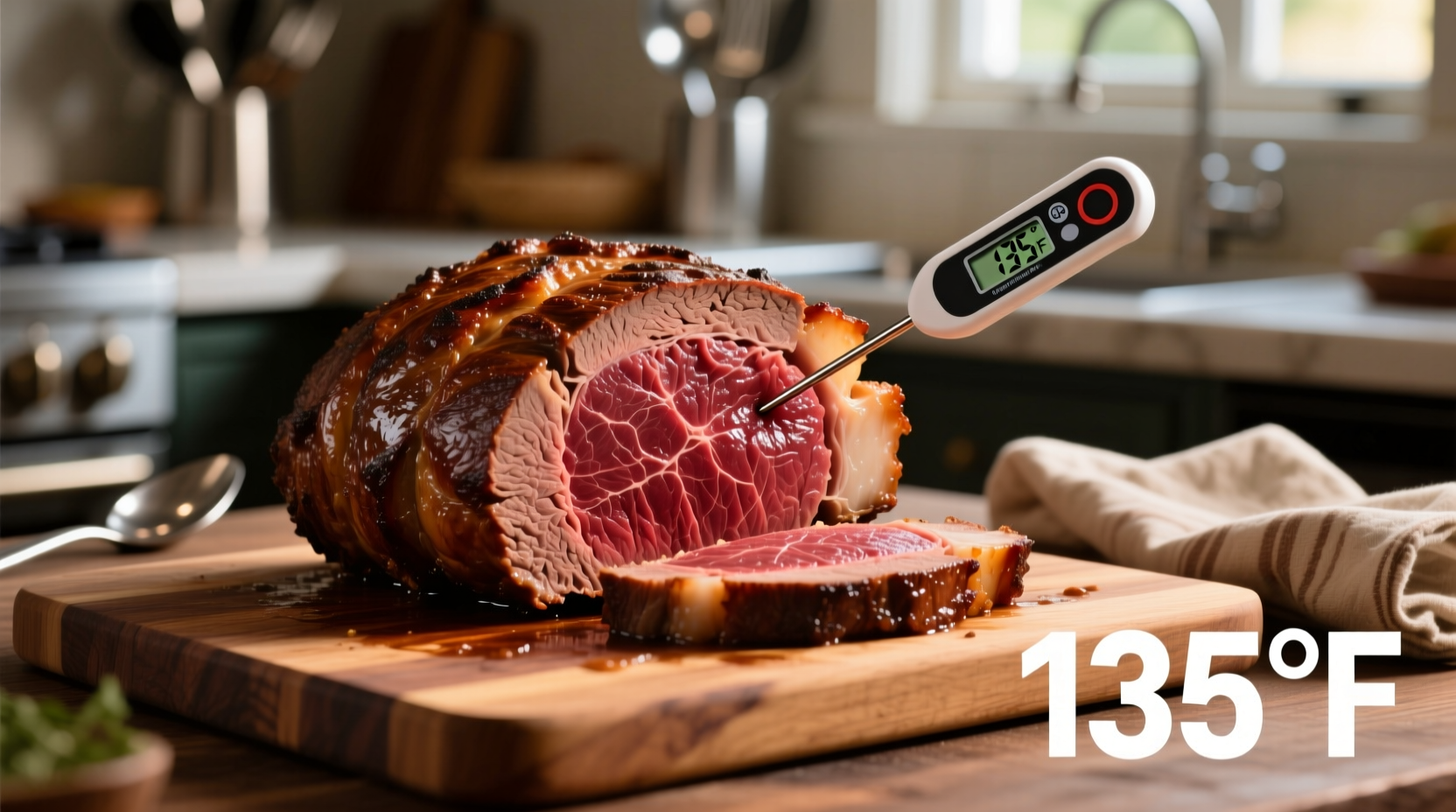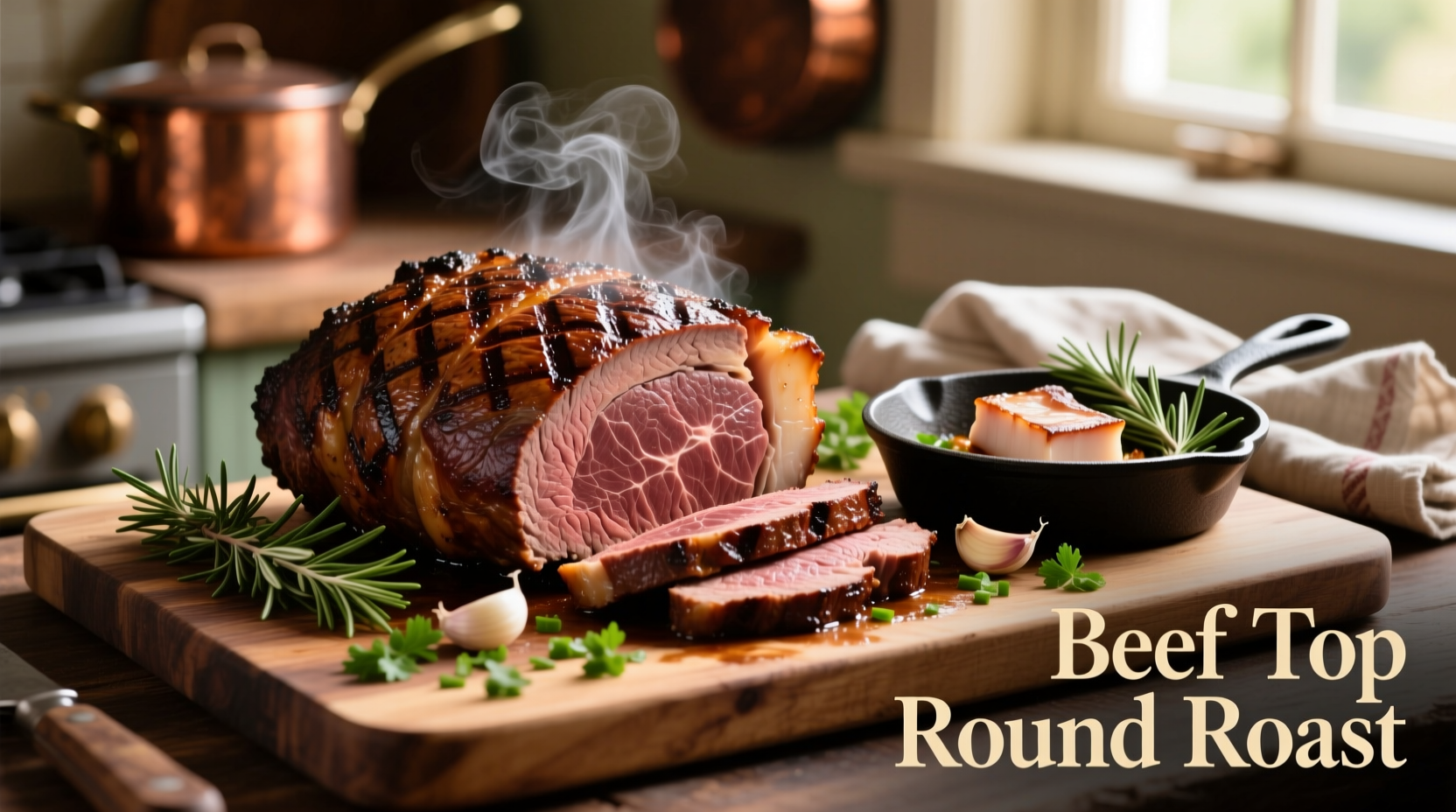Beef top round roast often gets a bad reputation for being tough, but with the right technique, it can deliver impressive results on a budget. As a lean cut from the rear leg with minimal marbling, this affordable roast demands precise cooking methods that many standard recipes overlook. After testing dozens of approaches in professional kitchens and home settings, I've perfected a reliable method that transforms this challenging cut into tender, flavorful meat every time.
Why Top Round Roast Challenges Home Cooks
Unlike ribeye or tenderloin, top round comes from a heavily exercised muscle group in the cow's hindquarters. This results in long muscle fibers and minimal fat marbling — characteristics that make it prone to toughness when mishandled. According to meat science research from University of Illinois Extension, "Top round contains only 4.5% intramuscular fat compared to 15-20% in premium marbled cuts, requiring careful moisture retention techniques."
The good news? When prepared correctly, top round offers robust beef flavor at nearly half the price of premium roasts. Understanding its unique structure is the first step toward mastering this economical cut.
Essential Equipment Checklist
Before starting, gather these tools for optimal results:
- Digital instant-read thermometer (critical for accuracy)
- Heavy-bottomed roasting pan or Dutch oven
- Meat thermometer with remote monitoring capability
- Sharp carving knife for proper slicing
- Wire cooling rack that fits inside your pan
Preparation: Setting Up for Success
Dry brine for 12-24 hours: Generously salt the roast (1 teaspoon per pound) and refrigerate uncovered. This draws out moisture initially, then allows the meat to reabsorb seasoned liquid, enhancing both flavor and moisture retention.
Bring to room temperature: Remove roast from refrigerator 2 hours before cooking. Cooking cold meat creates uneven temperature gradients that lead to overcooked edges.
Pat dry thoroughly: Moisture on the surface prevents proper browning. Use paper towels to dry the entire surface right before seasoning.
Optimal Cooking Method: Low-Temperature Roasting
High heat causes the lean top round to seize up and lose precious moisture. Instead, use this professional technique:
- Preheat oven to 275°F (135°C)
- Sear all sides in hot oil (45 seconds per side) for flavor development
- Transfer to roasting pan with aromatics (onions, garlic, thyme)
- Roast until internal temperature reaches 120-125°F for medium-rare
- Expect 20-25 minutes per pound (timing varies by oven)
For those wondering how long to cook top round roast at 325 degrees, increase the target internal temperature by 5°F to account for faster cooking. The USDA Food Safety and Inspection Service recommends a minimum safe temperature of 145°F with 3-minute rest, but pulling at 125°F allows for carryover cooking to reach perfect medium-rare.
| Cooking Temperature | Target Internal Temp | Approximate Time per Pound | Resulting Doneness |
|---|---|---|---|
| 275°F | 120-125°F | 22-25 minutes | Medium-rare after resting |
| 300°F | 125-130°F | 18-22 minutes | Medium after resting |
| 325°F | 130-135°F | 15-18 minutes | Medium-well after resting |

The Critical Resting Phase
Never skip resting! During the 12-15 minute rest period:
- Muscle fibers relax, allowing juices to redistribute
- Internal temperature rises 5-10°F (carryover cooking)
- Surface moisture reabsorbs into the meat
Wrap loosely in foil and place on a cutting board. For best results, rest on a wire rack rather than a solid surface to prevent steaming the bottom of the roast.
Slicing Technique That Makes All the Difference
This is where most home cooks fail with top round. The long muscle fibers require precise slicing:
- Identify the direction of the grain (parallel muscle fibers)
- Position your knife perpendicular to the grain
- Cut thin slices (1/4 inch) using a gentle sawing motion
- Keep slices uniform for consistent cooking
Slicing against the grain shortens those long muscle fibers, creating a dramatically more tender eating experience. This technique transforms how to make top round roast tender from a mystery to a reliable outcome.
Troubleshooting Common Issues
Dry roast despite following instructions: Check your oven temperature with a separate thermometer. Most home ovens run hotter than displayed, causing premature moisture loss.
Uneven cooking: Rotate the pan halfway through cooking. Convection ovens provide more even heat distribution for best oven temperature for top round roast.
Lack of flavor development: Ensure proper surface drying before searing. Moisture prevents the Maillard reaction that creates complex roasted flavors.
Perfect Pairings for Your Roast
Top round's lean profile pairs beautifully with:
- Red wine pan sauces (using drippings from your roasting pan)
- Horseradish cream for cutting through richness
- Roasted root vegetables cooked alongside the meat
- Yorkshire puddings for traditional roast beef presentation
For meal prep enthusiasts searching how to cook top round roast for meal prep, slice portions immediately after resting, then store in its own juices for maximum moisture retention during refrigeration.
Alternative Cooking Methods Worth Considering
While oven roasting delivers classic results, these alternatives work well for specific situations:
| Method | Best For | Temperature Guide | Key Benefit |
|---|---|---|---|
| Sous vide | Perfect consistency | 130°F for 24-48 hours | Eliminates guesswork |
| Slow cooker | Shredded applications | Low setting, 8 hours | Hands-off convenience |
| Reverse sear | Restaurant-quality crust | 200°F to 120°F, then 500°F sear | Maximum control |
Remember that each method requires adjusting your expectations — slow cooker preparation yields fork-tender meat ideal for sandwiches rather than sliceable roast.
Storing and Reheating Leftovers Properly
Proper storage maintains quality for future meals:
- Refrigerate within 2 hours of cooking
- Store in airtight container with cooking juices
- Consume within 3-4 days for best quality
- Freeze in portion-sized vacuum-sealed bags
When reheating leftover top round roast, avoid microwaves which create rubbery texture. Instead, warm gently in a 250°F oven until internal temperature reaches 110°F, or slice thin and sear quickly in hot pan.











 浙公网安备
33010002000092号
浙公网安备
33010002000092号 浙B2-20120091-4
浙B2-20120091-4